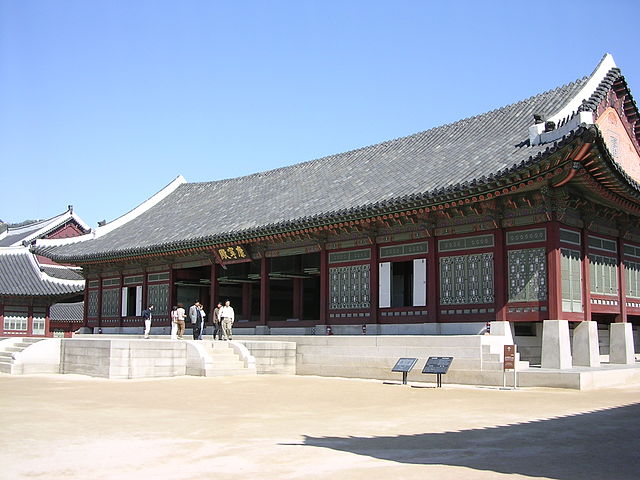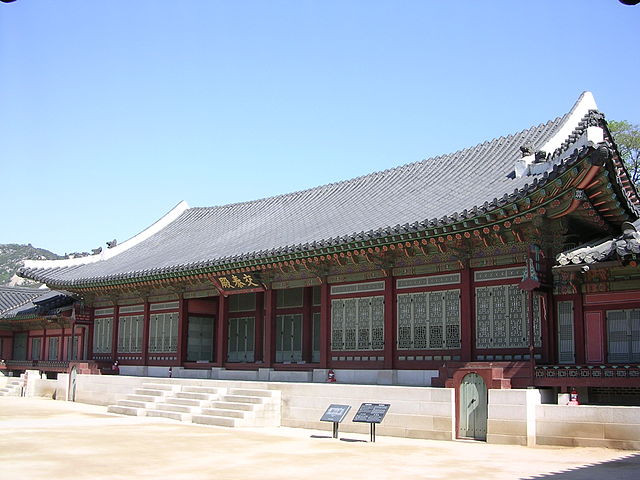
Gangnyeong-jeon
Gyeongbokgung Palace
Seoul, Korea
The king's residence, #12 on the palace map, is located at the beginning of the private area of the palace behind the throne room (previous page). This is a large, nine-bay hall whose gable roof (unhipped) denotes its superior status (see Chinese roofs for other examples). The platform on which it rests includes several piers at the ends, to allow for access to the understory below. The building was constructed in 1395, destroyed during the Japanese invasions (1592), rebuilt in 1867, burned down again in 1876, and rebuilt again in 1888. In 1920, the Japanese occupiers dismantled Gangnyeongjeon and used its materials to rebuild Huijeongdang, the king's residence hall of Changdeokgung palace, which had burned down in yet another fire. At last, in 1994, Gangnyeongjeon was again rebuilt - whether for the last time, only the future can tell.
Gyeongbokgung Palace
The queen's residence, #17 on the palace map, is located behind the king's residence a little further into the private area of the palace. Its history and its architecture parallel that of Gangnyeongjeon above. Gyotaejeon was built a little later, in 1440 (reign of Sejong the Great). Like Gangnyeongjeon it was destroyed in the Japanese invasion, reconstructed in 1867, "recycled" by the Japanese occupiers in 1920 (to rebuild Daejojeon), and finally itself rebuilt by the Korean government in 1994.
The architectural similarities between the buildings are obvious from comparing their photographs on this page. Gyotaejeon's platform lacks
the king's elaborate approach. Its understory is accessed through a door in the platform, and it is connected to auxiliary buildings by enclosed corridors.
Gyotae-jeon
Seoul, Korea



